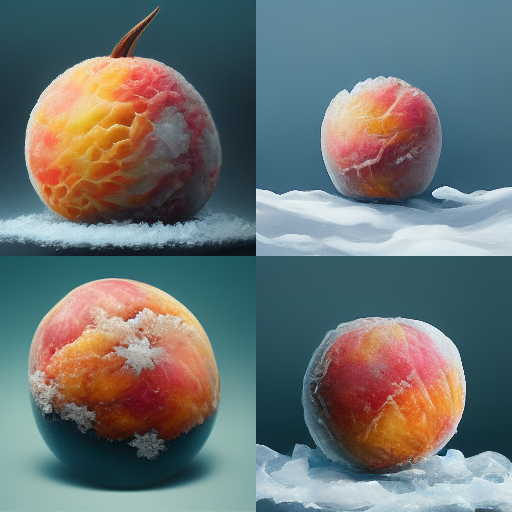I went on a Midjourney Bender. For those of you who don’t know, Midjourney describes itself as “an independent research lab exploring new mediums of thought and expanding the imaginative powers of the human species.”
Yeah, that doesn’t tell me anything either. The simple answer is that Midjourney is a computer program that creates art based on prompts. Colloquially, Midjourney is an AI, or at least it’s being billed as one. I feel like we have drastically changed the definition of what AI is for the rest of eternity. We’re going to need a new word for the AI singularity that’s more specific than the AI singularity.
AI, as being used in the news lately, is essentially a black box. Whatever you put in the black box comes out the other side transformed. Truthfully, we don’t know much about how that black box works, but yet it works. Type in “a frozen peach” and it spits out four pictures of frozen peaches.

It’s indistinguishable from magic.
At first it was morbid curiosity, then it became obsession, and now it is a tool I will be cognizant of every time that I inevitably use it in the future. I’d like to say I’d never use it again, but that’s going to become impossible. It makes me feel dirty having used it even as far as I did.
During my obsession with AI, I realized that I was designing a card game that had 64 unique cards. At that moment, the art was blank, but with this new Midjourney toy? Oh, the possibilities!
I’m a sucker for a good looking prototype.
Perhaps without thinking about the consequences of my actions, I generated a few hundred pieces of, for the lack of a better word, “art.” I threw those art pieces into my card generator, and in “mere hours” I had 64 unique cards that looked amazing. I’m still using that art. I actually kind of love it, despite the fact it quickly falls apart as art the longer you look at it.
Ultimately, the art for my prototype serves its original intended purpose. It shows what the game could be, in theory, if someone were to publish it. I’ve decided that is all that it will do. I do not want a publisher that would consider this art as complete and ready for sale.
I could argue both sides of the AI debate if I really felt like it. I don’t need it explained to me. I don’t need to be evangelized one way or the other. The line that I personally draw is vague and very personal. It probably comes off incredibly centrist of me, but I’ve decided that AI as we know it is a tool.
And I wish I could say that’s it. That’s my entire blog. But I can’t.
I kind of hate that I made a prototype using AI art. I hate that I am going to indirectly profit from it, should this prototype get signed and see the dust of the shelf. I love that technology made it. I love that I magicked it out of thin air. I love everything that it made and it looks amazing in my hands. I hate that I have to write this blog. I hate that I’m going to be using AI again, and again, and again.
Have I ever used photoshop?
Have I ever used photography?
Have I ever used my own pen?
Have I ever used my own ink?
Somewhere along the line I am using the fruits of someone else’s labor and intelligence, and building on top of it.
Do you know what makes that different from an AI? The human.
I want a human to express themselves through art. I want that art to be a part of my projects. I want to create real, human, connections between people that may not have ever interacted prior. I can’t make a board game alone, and I didn’t make this board game to be played alone. I don’t want to make one alone.
James Parsons at Sapphire City Games published my first game design, and gave it the theme. He described the dogs to Lauren Brown, who beautifully brought them to life. He allowed me to immortalize my own dog, Metroid, in the game.
Board games are about people. I want all my games to be about those people, and the people who experience my games, and the people they talk about my games with.
That is why I hate AI.